By Eric Vandenbroeck and co-workers
Target Tehran
The empire created by
Iran’s chief terrorist, Islamic Revolutionary Guard Corps Quds Force chief
Qassem Soleimani, killed in Iraq in 2020 by a U.S. drone strike utilizing
Israeli intelligence, is fast
crumbling. The Assad regime in Syria, the Islamic Republic’s sole state ally in
the Middle East, has fallen to Sunni Salafist
jihadists. Lebanese Hezbollah,
the brightest star in Tehran’s constellation of regional terror proxies, has
seemingly been neutered by
Israel, and its influential
leader, Hassan Nasrallah, is no more. The land bridge, the terror highway connecting Tehran to Iraq, Syria,
and Lebanon, now has a gaping hole in it.
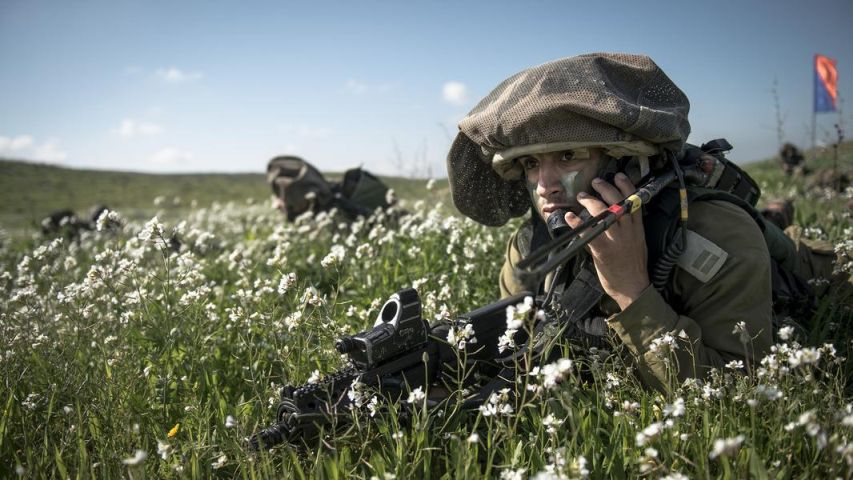
An IDF soldier
None of this was
foreseeable on Oct. 7, 2023, when Hamas, an Iran-backed Palestinian terror
group, burst forth from the Gaza Strip and killed 1,200 Israelis in addition to
taking more than 200 hostages. Nor was the breadth of the response from other
Iran-backed proxies to broaden the war and support their fellow Axis of
Resistance member foreseeable: Hezbollah from Lebanon on Oct. 8, Shiite
militias from Iraq on Oct. 17, and Houthi rebels from Yemen on Oct. 19. But one
year later, Israel has withstood Iran’s “ring of fire,” Hamas has been decimated in Gaza, and many of its
leaders, such as Ismail Haniyeh, Yahya Sinwar, and Saleh Arouri, have been
killed.
No doubt 2024 was a
historic year in the four-decade-long Israel-Iran war. Not once, but twice,
Iran brought its attacks out of the shadows and directly launched a barrage of
projectiles—including ballistic
missiles capable of
carrying a nuclear warhead—at the Jewish state. In response, Israel’s military
retaliation against Iran’s second attack struck a reportedly active and
undeclared nuclear
weapons facility.
But before Iran’s
string of military defeats and overt setbacks, came a decades-long covert war
by Israel against the regime’s nuclear program. In “Target Tehran,” Yonah Jeremy Bob and Ilan Evyatar,
two Jerusalem Post correspondents, chronicle Israel’s efforts to expose and
thwart Iran’s atomic quest. “Target Tehran” is a book rich with case studies
detailing how Israel pursued a “death by a thousand cuts strategy”
against a regime that
has claimed that
Israel would not survive to see the year 2040.
The book opens in the
middle of an ingenious heist, Israel’s 2018 seizure of Iran’s “atomic archive” from a warehouse in
Tehran province, home to
the country’s capital city. The archive was a treasure trove of material
documenting past crash efforts to develop a small nuclear
weapons arsenal and
present the world with an atomic fait accompli. Caught initially in 2002 trying
to build secret nuclear facilities, Iran layered on lie after lie to the
international community in diplomatic efforts designed to buy time for
development of its nuclear program. Beginning with the theft of the archive,
the authors establish early on that personal, professional, and occasionally
even political drivers can play a role in Israel’s shadow war.
The U.S. military
base at al-Tanf sits astride the main highway from
Baghdad to Damascus, blocking the lower branch of the land bridge’s
southern route
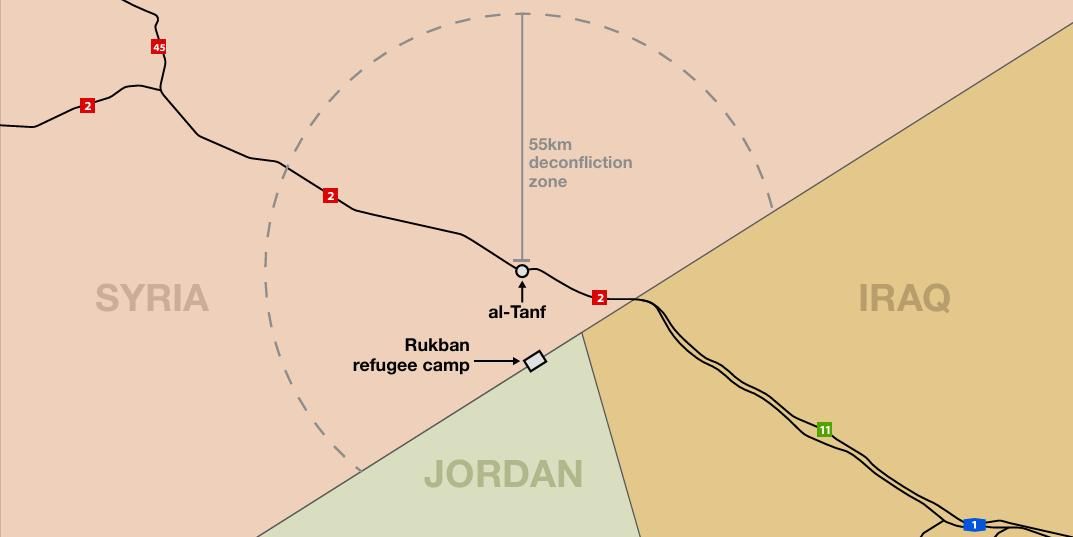
Although other
studies, notably Ronen Bergman’s “The Secret War with Iran,” have chronicled
earlier rounds in Israel’s covert war against the Islamic Republic, “Target
Tehran” focuses specifically on Israel’s efforts since the 2015 Joint
Comprehensive Plan of Action (JCPOA) to prevent Iran from developing nuclear
weapons. The 2015 nuclear deal did not require a cessation of uranium
enrichment, as stipulated in at least five UN Security
Council resolutions between
2006 and 2010. Instead, it offered temporary caps governing Iran’s level of
enrichment purity and domestic stockpiles of enriched uranium. Worse, it did
not require the destruction of centrifuges—the
machines that enrich uranium—but rather their disconnection and storage.
Indeed, one reason Tehran has been able to rapidly grow its
nuclear capacity since
leaving the deal in May 2019 (one year to the day after the U.S. left the
accord in May 2018) is this retained centrifuge capacity, coupled with irreversible
gains in nuclear
knowledge.
Israel’s clandestine
efforts to expose Iran’s nuclear designs aimed to devalue this flawed deal and present the world with incontrovertible
evidence of Iran’s long-term intentions. “Target Tehran” posits that logic as
driving Israel’s daring raid to seize this archive. Although Washington’s rationales for
leaving the 2015 accord were
multifaceted and driven by both strategic and political considerations, the
retention of this nuclear archive likely did not sit well with the Trump
administration, which came into office seeking initially to renegotiate
or “fix” rather
than “nix” the deal.
Of note, this language
framing the fate of the deal was first employed by Israeli Prime Minister
Benjamin Netanyahu during his 2017 speech to the UN General Assembly. To be
clear, Iran did not admit the theft when it happened. But upon leaving office
in 2021, President
Hassan Rouhani—who was
in his second term as president at the time of the heist—reportedly claimed,
“The secrets that the Zionists came and took from inside [the country],
published and showed to [former U.S. President Donald] Trump [led him] to
abandon the [nuclear] agreement.”
Nuclear experts have
gradually seconded the value the archive offers, cautiously
noting the need for the
International Atomic Energy Agency to investigate
weaponization-related claims from the archive as well as to use the documents
to investigate lingering uncertainties insufficiently
addressed by past probes.
The value of the archive continues to grow given investigations by the agency
into suspected
nuclear sites where
traces of uranium have been found, as well as more recent Iranian promises to
work with the agency despite
past instances of stonewalling.
A Maxar closeup satellite imagery of the Parchin
Military Complex in Iran
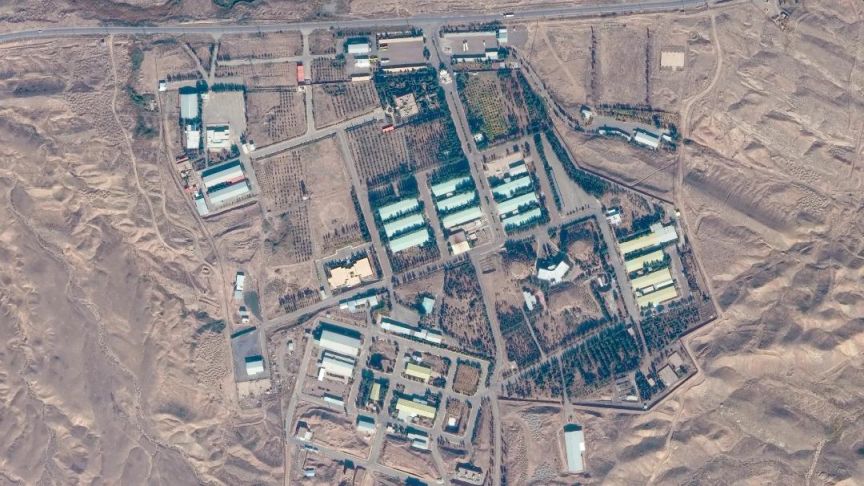
“Target Tehran” is
replete with quotes from Mossad officials and other high-level Israeli
decision-makers documenting the deliberations behind the moves constituting
Israel’s covert war against the Islamic Republic. Often reading like a spy
novel, Bob and Evyatar’s reporting provides more
detailed accounts of Israeli operational planning than have prior journalists’
stories. They address several Israeli clandestine operations, including the use
of cyber tools and even assassination of key scientific and administrative
contributors to the Islamic Republic’s nuclear program. Given the more recent
scope of operations covered, readers from academic, policy, media, and lay
backgrounds will all find something to cherish in the book’s pages.
Furthermore, those
with an interest in Israeli domestic politics will especially appreciate the
light that “Target Tehran” sheds on both the continuity and the evolution of
efforts under five Israeli prime ministers, as well as multiple Mossad chiefs,
to undermine Iran’s nuclear ambitions. In so doing, the book offers insight
into stylistic and substantive changes in Israel’s covert operations rooted in
each leaders’ respective risk tolerance as well as perception of the threat
from Tehran.
Expectedly, the
authors describe the now well-known Olympic Games operation, better known as
the Stuxnet cyberattack. But their more important contribution is bringing to
light the more recent series of cyber skirmishes between Tehran and Jerusalem.
Unlike the realm of traditional espionage, where Israel holds a considerable
advantage, the cyber domain
constitutes more of a level playing field for the two states. The wide array of
targets chosen by Tehran for cyber-enabled retaliation when faced with Israeli
covert successes is particularly striking. These targets have included everything
from critical infrastructure, such as water treatment facilities, to private
medical clinics, as well as data from an Israeli LGBTQ dating site and the
cellphones of high-ranking officials such as opposition leader and former
Israel Defense Forces Chief of Staff Benny Gantz and Mossad Director David
Barnea.
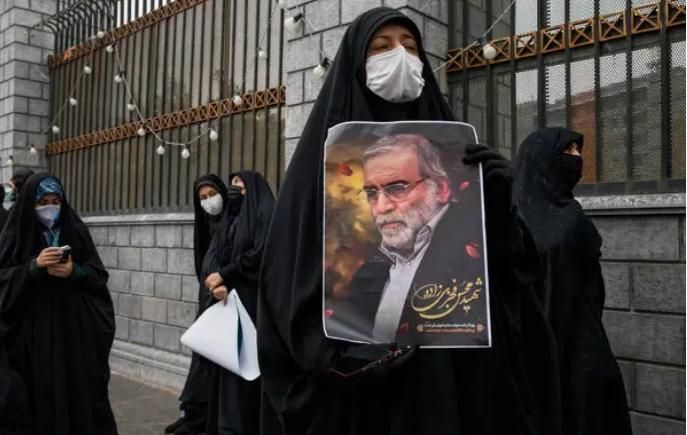
When it comes to
assassinations, Bob and Evyatar give only brief
attention to pre-2015 episodes, such as the reported killing of the father of
Iran’s ballistic missile program, Hassan Tehrani
Moghaddam, in 2011. They focus
on more recent killings, such as Israel’s targeting of Iran’s chief military
nuclear scientist, Mohsen
Fakhrizadeh-Mahabadi, in
2020, which receives an entire chapter. The authors confirm what more recent
stories in the press
suggested, that Fakhrizadeh was killed with a remote-controlled gun “smuggled
into Iran in pieces and secretly assembled there over a period of eight months
by a team of twenty operatives that also tracked Fakhrizadeh’s every movement.”
What makes “Target
Tehran” particularly compelling reading is its attention to Israel’s covert
diplomatic efforts to isolate Iran. The authors trace over a decade of Israeli
moves to establish deeper security and intelligence relationships with nations
on the Iranian periphery, such as the Arab states of the Persian Gulf, and
chief among them, Saudi Arabia and the United Arab Emirates (UAE). Here, the
book painstakingly details efforts to develop at first a covert relationship
based on a shared perception of threat from a rising Iran and then efforts in
both Jerusalem and Washington to work with Arab ambassadors to make those
relationships overt. These initiatives, begun long before the Trump
administration, led to the breakthrough known as the Abraham Accords, which saw
high-level diplomatic ties established with Bahrain and the UAE in the fall of
2020. Critical to this effort was Israel’s ability to employ a mix of
strategies, cautiously building consensus against the Iranian threat where
possible and offering an alternative to the nuclear deal by daring to envision
a more expansive regional order that integrated Israel into the Muslim world
beyond the peace treaties agreed to with two of its neighbors.
The book ends by
zooming in on what would be the crowning achievement of that diplomatic effort,
establishment of relations between Israel and Saudi Arabia. As to that goal,
“Target Tehran” strikes an optimistic tone, no doubt a product of its
publication in early 2023, well before Hamas’s attacks in October of that year,
the resulting hot wars Israel has been engaged in, and the Saudi
foot-dragging that
has followed.
Saudi Foreign Minister Prince Faisal bin Farhan
Al-Saud arrives at the BRICS summit in Kazan on Oct. 24, 2024.
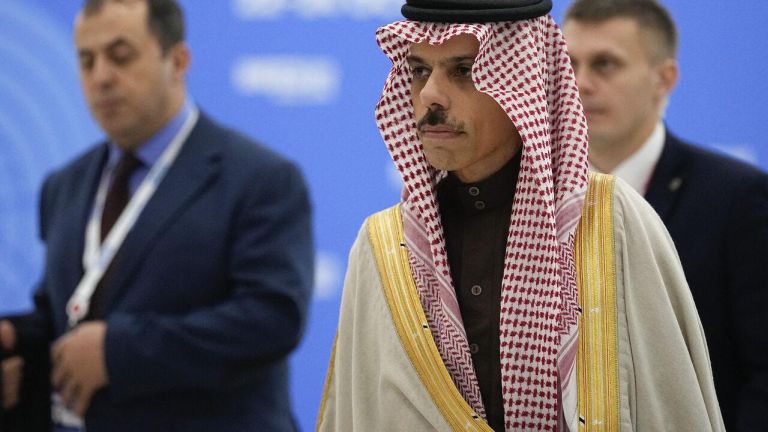
While “Target Tehran”
focuses on covert exchanges between Israel and Iran, it provides important
context for Israel’s recent conventional military successes. Recognizing the
broader array of domains in which the Israel-Iran conflict is constantly
unfolding is particularly important for understanding the post-Oct. 7 Middle
East.
Thus, the book’s
focus on covert and diplomatic efforts still results in an important
contribution. With Iran’s proxies handicapped across the region, Tehran today
is increasingly rattling the nuclear saber, with political
elites, military
officials, and even media outlets trying to bolster Iran’s battered deterrence
architecture by threatening to double down on
its atomic program. Here,
the words of Mossad Director Barnea that close “Target Tehran” set both the
reader and the policymaker up for an eventful 2025: “Iran will not have nuclear
weapons … not in the coming years, not ever. That is my promise, that is
Mossad’s promise.”
For updates click hompage here